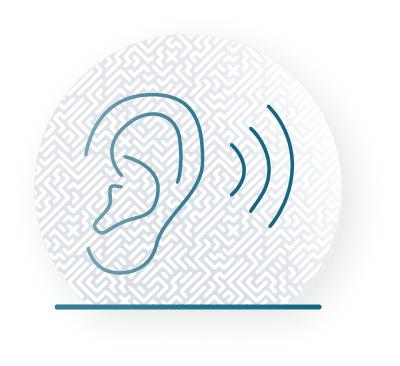
One of the most effective ways to connect with your customers? Conversational customer service via text message.
With the variety of ways we can communicate, businesses are starting to recognize and understand how effective text messaging is. Combine text’s 98% open rate with customer service and you’ve got a winning strategy!
So how exactly do you provide conversational customer service? Keep reading and learn seven tips for implementing conversational customer service via text message effectively.
What is Conversational Customer Service?
Conversational customer service uses natural, two-way communication. Unlike many other customer service models, which often rely on scripted responses and formal language, conversational customer service creates a more personalized and humanized experience for customers.
The goal of conversational customer service is to make customers feel heard, valued, and understood, ultimately helping them to have a better experience with your brand.
Conversational customer service is especially prevalent in text-based communication channels, such as live chat and text messaging. Providing customer service via text allows you to answer questions in a timely and approachable way.
Why Does Conversational Customer Service Matter?
Conversational customer service helps your business build genuine connections, provide personalized experiences, and makes communication more efficient. It helps you resolve issues quickly while building stronger relationships that lead to increased customer loyalty.
Conversational customer service via text works well because it feels familiar, allowing you and your customers to communicate smoothly and honestly.
7 Tips for Implementing Conversational Customer Service Via Text Message
1. Humanize your Tone

When communicating with customers through text messages, it’s important to still sound like a human. Show your personality in your responses, even in transactional customer service messages.
Avoid robotic and overly formal language. Instead, use a tone that mirrors a face-to-face conversation. Inject a bit of warmth and empathy into your messages to make customers feel heard and valued. This helps in establishing a connection and making customers feel like they are interacting with real people, not bots.
For example, instead of saying “Your request has been received,” say “Hi [First Name], We received your question. We’re on it and will get back to you ASAP.” The second phrase still conveys the same message but in a less stiff and more natural, human-like way.
2. Actively Listen

Listen to your customers to understand their needs and concerns. When customers reach out with questions or concerns, give them your full attention. This means listening without interruption, empathizing with their situation, and asking clarifying questions when necessary.
Show genuine understanding and concern, and try to find solutions that meet their specific needs. By doing these things, you’re able to solve their immediate issue and make them feel valued and heard.
3. Respond in a Timely Manner

Customers expect quick responses, especially when texting, so it’s crucial to prioritize timely responses. Set clear expectations for response times, and make sure your team is equipped to meet them. Even if you can’t provide a solution immediately, acknowledge the customer’s question and let them know you’re working on it.
As much as we’d like it to be, this isn’t sustainable on your own. You can’t easily manually respond to every question or ticket as they come in. To help you respond to questions quickly, automate your outreach.
Use automation to start and keep conversations going. Automation is best for creating real-time conversations when you’re busy and can’t actually respond. Automating text messages makes quick responses and follow-ups possible, but make sure your automated messages don’t send until you’ve actually read the customer’s message or you’ll sound like a bot. Be sure you also have a way to stop automated messages if someone has responded to a previous message.
Even when using automated messages, you can still make them sound personal and more human-like. This being said, be mindful of automating too many of your replies and follow-ups.
4. Use Positive Language

Maintain a positive and solution-oriented approach in your messages. Even when addressing problems, frame your responses to focus on finding solutions rather than dwelling on the issue.
Remove negative words from interactions and replace them with positive words.
Some negative words/phrases to avoid are;
- I don’t know
- You misheard me
- Unfortunately
- No, I can’t
- We’ve never had an issue like this before
Removing negative words like these helps you to address problems effectively while creating a good experience for the customer.
5. Personalization Interactions

Make customers feel like individuals, not just ticket numbers because great customer service is all about building genuine relationships and connections. You need to provide service that goes beyond a standard script or one-size-fits-all solution. Understand your customer’s needs, address their concerns, and make sure they feel seen and valued by your business.
Remember customers’ names, past interactions, and any relevant details that can be used to personalize future interactions. It’s easier to give personal customer service when you know this information and have built a connection with the customer.
Essentially, by personalizing interactions, you create an individualized experience for each person who interacts with your business, which leads to long-term customer loyalty. It creates a sense of familiarity and shows that you value their ongoing relationship with your business.
Related: What is Personal Customer Service and How Do You Provide It?
6. Incorporate Multimedia

Since texting is a more personal method of communication, get creative with your messages and use multimedia. Use multimedia elements when appropriate. This includes using photos, videos, GIFs, and emojis to engage with and answer customer’s questions. Visual content can help convey information more effectively and adds a dynamic element to your conversations.
7. Write Clear and Concise Messages

Don’t treat texts like an email. Keep messages short and clear. Avoid slang, jargon and overly complex language. Using excessive slang or industry-specific jargon alienates some recipients who may not understand the terminology. Word your messages in a natural way, like a human would write them.
Be straightforward with the information you’re sending. Avoid overwhelming customers with unnecessary details that may dilute your message. Break down information into digestible chunks to minimize the chances of misinterpretation.
Keep Customers Longer with Conversational Customer Service
Conversational customer service is the key to building meaningful customer relationships. And meaningful customer relationships turn into long-term customers who stay loyal to your brand.
Don’t wait — start building these relationships with Skipio. Our conversational texting platform specifically helps customer support teams quickly and efficiently handle customer questions and outreach via text message.



